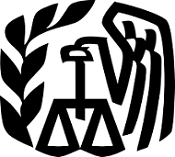BLOG
Rev. Proc. 2010-14: are you eligible? If so, how should you proceed?

First, let's consider eligibility. The revenue procedure applies to:
- Taxpayers who properly transferred relinquished property to a QI and
- have properly and timely identified replacement property,
- unless QI default occurs during the identification period.
- Taxpayers who were unable to complete the exchange solely because of the QI default and the QI
- then becomes subject to a federal bankruptcy, or
- receivership proceedings under federal or state law.
- Taxpayers who have not had actual or constructive receipt of
- the proceeds from the sale of the relinquished property, or
- any other property of the QI prior to the date the QI enters bankruptcy or receivership proceedings.
As you can imagine, a number of taxpayers have been holding their collective breath hoping for some good news on this situation.
The second consideration is reporting. Once the exchanger has determined that they meet the applicability test of the revenue procedure, an analysis must be performed on how to report the failed exchange. Thankfully, the revenue procedure also explains how this should be done. The application of the revenue procedure includes:
- Recognizing gain only as payments are received; this is good news, as the tax liability can be satisfied from payments received by the taxpayer, rather than from other sources.
- This also allows the taxpayer to report the gain in the year the payment is received, rather than the year the relinquished property was disposed.
- Recognition of gain through the "gross profit ratio method."
- The portion of any payment related to the relinquished property is multiplied by,
- a fraction composed of the taxpayer's gross profit over the contract price.
- The portion of any payment related to the relinquished property is multiplied by,
Definitions for proper reporting are:
- Payments include: proceeds, damages, or other amounts related to the sale of the relinquished property.
- Gross Profit is defined as the selling price of the relinquished property, less the property's basis.
- Any selling expenses not paid by the QI out of proceeds should be added to this amount.
- Selling Price generally means the amount realized on the sale of the relinquished property.
- Contract Price is the selling price of the relinquished property less any assumed debt (by the buyer and not in excess of the adjusted basis of the relinquished property).
- Assumption of debt in excess of basis is treated as payment, related to the relinquished property, in the year satisfied.
Finally, as always, consult your tax advisor. Like all issuances related to the I.R.S., the actual RevProc 2010-14 document is much more detailed than the above overview and a comprehensive analysis should be left to a competent tax advisor - preferably one familiar with your specific circumstances. If you believe that you may qualify under this new revenue procedure, you should contact a tax professional immediately.

